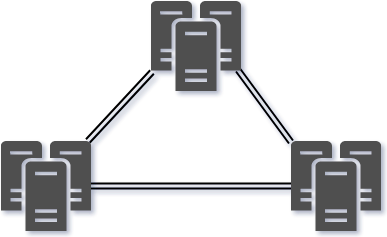Setup:
- Dual-homed BGP between AS100 and AS200
- AS100
- HSRP 192.168.0.10 between R1 and R2
- Router 1 HSRP Master
- Linkstate tracking on Fa0/0
- EIGRP as IGP
- AS200
- HSRP 10.10.10.10 between R3 and R4
- Router 3 as HSRP Master
- Linkstate tracking on Fa0/0
- OSPF for IGP
Scenario: The link between Router1 and Router3 would fail. Linkstate tracking would decrement the HSRP priority and switch masters.
When the link was restored and using default HSRP timers, the HSRP master would switch back before the BGP session was established between Router1 and Router3 (at least in GNS3).
Setting up delay timers and linkstate tracking would allow for a good recovery.








